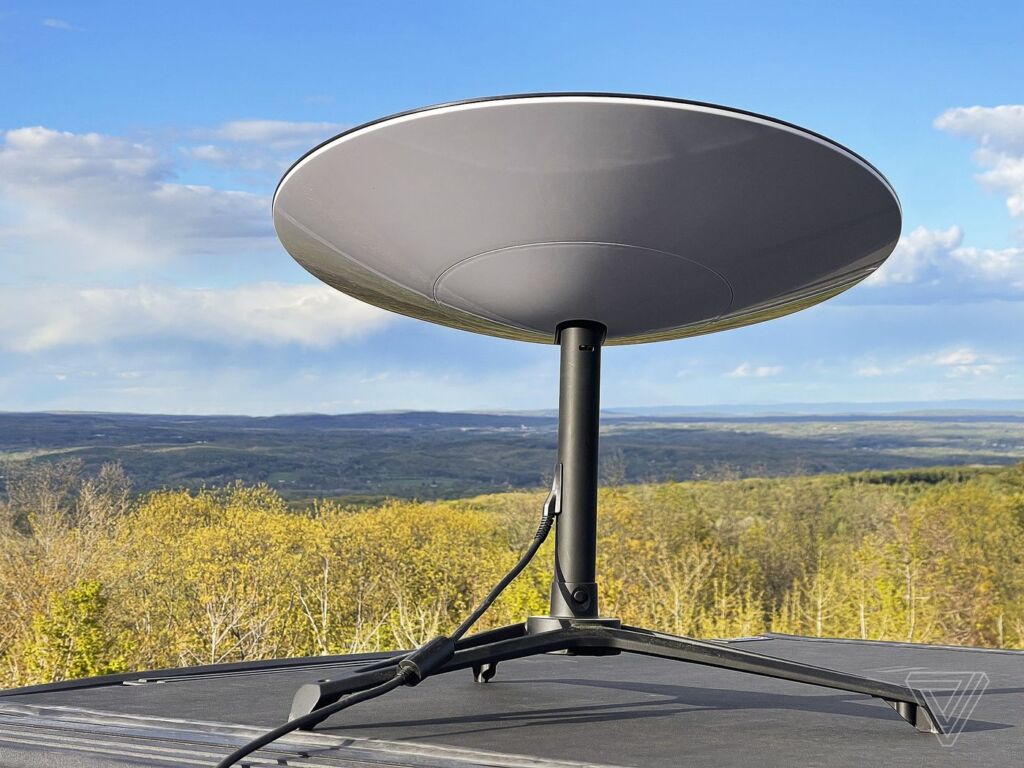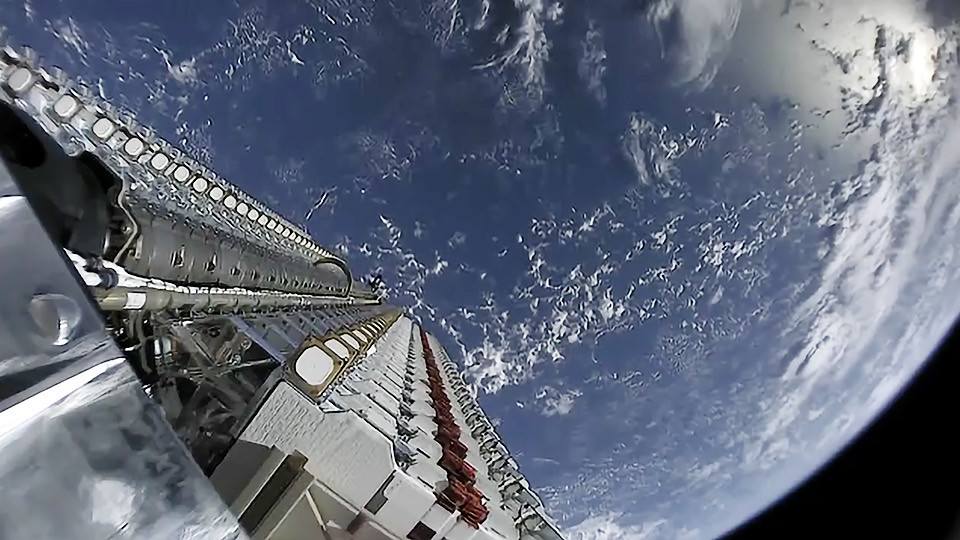Starlink, a collection of satellites operated by SpaceX, is at the forefront of delivering global wireless internet coverage to nearly 45 participating countries. In this blog post, we will discuss the basics of the technology and the engineering behind it, the program’s central mission, and how it will revolutionize internet availability in the near future. We will cover the following topics:
- Starlink Technology: A Simple Explanation
- Starlink’s Missions
- Starlink in Action: Can You Observe the Satellites?
- How will Starlink Shape the Future?
- The Man Behind SpaceX and Starlink

Broadband Internet from Cosmos. Image Courtesy of Nilay Patel
Starlink Technology: A Simple Explanation
Starlink is the world’s first low earth orbit (LEO) satellite collection to deliver broadband internet to users back on Earth. Starlink’s internet is exceptionally versatile and easily capable of supporting streaming, video calls, online gaming, and practically any activity involving the complexities of the web. But what makes this different from the standard internet we access today? Most of our internet access today is provided using cable technology with fiber optics to transmit data. A system like Starlink instead utilizes radio signals sent through the vacuum of space. This process is called “beaming” internet data.
The process starts with numerous hubs on the surface. Ground stations send signals to the LEO satellites, then the data is processed and relayed back to earth. The satellites themselves – shown below aboard SpaceX’s Falcon-9 rocket (their standard method of transportation to space) – weigh around 570 pounds and are comparable to the size of a small table. SpaceX’s Gen2 satellite, to be used in the same constellation project, is much larger than the original Starlink components. The new satellites are 22 feet long and over 2,700 pounds, making them almost five times the size of the originals.
The satellites are positioned about 340 miles from the earth’s surface, making them in close enough proximity to be pulled back down to earth if the machines were to die. The satellite would burn up upon re-entry, preventing the unfortunate case of these thousands of satellites becoming unnecessary space junk. SpaceX plans to tackle the maintenance of the satellites with their new Starship rocket. The Starship rocket is also the only available rocket able to carry the larger satellites to their positions.
Starlink’s Missions
Elon Musk’s spaceflight company, SpaceX, is one of the leading aerospace companies of the 21st century. The Starlink project aims to provide high-speed internet access to those around the world currently living without it. So far, SpaceX has had 202 successful launches and 164 successful landings. To learn more about each individual SpaceX mission, you can visit their website for a portfolio here.
Most Starlink missions are relatively the same, and they are currently only launched out of California (Vandenberg Space Force Base) and Florida (Kennedy Space Center, Cape Canaveral). SpaceX’s Falcon-9 rocket launches and typically releases around 50 Starlink satellites into low-earth orbit. Following stage separation, the boosters of the Falcon-9 will return back to earth landing on a drone ship in the Pacific Ocean. To learn more details about how these missions are carried out, visit the SpaceX website here. You can watch most launches via SpaceX live-stream on Twitter or YouTube.
The next planned Starlink launch will be tomorrow, January 26th, at 4:02 AM Eastern Time. A SpaceX Falcon-9 rocket will take off from launch pad 40 at Cape Canaveral in Florida, rumored to be carrying the newest Starlink V2 Satellites and Starlink Gen 2 hardware. To tune into the live stream for the Starlink 5-2 launch, you can visit this website on your computer or mobile device.
Starlink in Action: Can You Observe the Satellites
According to SpaceX, Starlink is now available for use on all seven continents. Although presently it is only being used in a select number of countries globally. A map of Starlink’s current availability is shown below.
Habitants of Earth have been seeing Starlink satellites in the night sky since early 2019, and they usually appear in a strictly organized formation. Their formation is easily recognizable because of their notable brightness. Consequently, Astronomers have started to voice concerns regarding the satellites’ interference with astronomical observations. The next generation of Starlink satellites is even larger, and a design that lacks visors to block sunlight from reaching reflective surfaces could prove an even larger issue to worried astronomers. This will be a continued discussion and an important compromise for SpaceX to consider in the following years.
How will Starlink Shape the Future?
Starlink has the potential to essentially change the world, by offering humanity access to the internet in extremely remote areas. Areas that are even too desolate to lay down infrastructure and raise civilization. This makes it an exceptional option for less fortunate areas around the world, whether that be a result of slower civil development, natural disaster, or other global threat.
For example, Starlink’s internet has recently played a critical role in keeping Ukraine’s military online throughout the war against Russia. Even with a significant amount of communication infrastructure being destroyed, Starlink has assisted Ukraine in organizing its defense against the invasion. Although SpaceX’s satellites have proven helpful during this time of conflict, it also sheds light on another concern regarding overreliance on private companies during wartime. This article sheds further light on this subject.
The Man Behind SpaceX and Starlink
SpaceX, short for Space Exploration Technologies Corporation, was founded in March 2002 by businessman and investor Elon Musk. Musk is also the CEO and Project Architect of Tesla Inc, as well as the owner and CEO of Twitter. He remains the CEO and Chief Engineer of SpaceX, playing a large role in the projects maintained by the company. In recent years, the SpaceX corporation has rapidly become one of the leading aerospace providers of the 21st century. Musk’s development of Starlink began in 2015, and it has since proven its potential in becoming the largest internet provider across the globe. SpaceX and its diligent engineers will continue to rapidly innovate space travel. Due to their success, SpaceX has agreements with NASA to assist in the upcoming Artemis missions to the moon.
What do you think about the technology and impacts of Starlink? Is easier global access to technology more of an advantage or disadvantage considering how technologically dependent and advanced our world has become? Leave your thoughts in the comments below!



